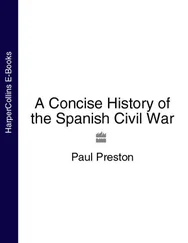1 ...6 7 8 10 11 12 ...44 If there was simmering discontent in the 1630s, it was not so much with Ship Money as with Archbishop Laud, eagerly bringing ceremonial back to the Church of England in the form of altar-rails and reverence for the Eucharist, and as eagerly denouncing and suppressing ‘Puritans’, or the godly, as they called themselves. Worst of all, Laud was dismantling the central doctrine of Calvinism, predestination. In Calvinist predestination, every person is already bound for heaven or hell. Human beings are so sinful that they can only understand God’s message and achieve faith if he gives them grace to do so. This happens suddenly if it happens at all. God chooses who will be saved and who damned, regardless of merit or desert. God emerges as not unlike a capricious monarch, electing some to bliss, dropping others into woe. But Laud and his followers were Arminians (though Laud tried to stay neutral in public), and this meant they believed that faith grew slowly together with a person’s chosen and willed virtue.
So from a godly point of view, the Church of England was being run by an emissary of hell, and the king was doing nothing to stop him. People began to wonder if Charles’s personal rule risked running the kingdom into the arms of Rome. In the Stuart era, religion led, and political questions followed. The result was to stir up constant questions about what might previously be taken for granted.
Whatever the godly thought, Laud saw himself as a stout Protestant, doughtily fighting the encroachments of Rome and the godly alike. For him, the Church of England was a shambles. He was especially upset by Old St Paul’s in London, the nave of which had become a place to see and be seen, to sleep rough, or to do a little business. There were adverts plastered on the walls and pillars. The noise was intense and irreverent: ‘like that of bees, a strange humming or buzz mixed’, thought the horrified prelate. For Laud, the church should be hallowed, special. It wasn’t that he believed in the Real Presence; he just thought, not too eccentrically, that churches ought to be different from markets, and that it wouldn’t hurt to bring beauty and order to them.
But it did hurt. The Church of England, then as now, was an awkward coalition of quite diverse groups. With much bickering, its members had come to tolerate the white walls and bare wood of the Elizabethan church settlement, the spareness of its services. Some wanted still more reform – was not a church itself a kind of icon? – but were willing for it to take place gradually, through local effort. Some still enjoyed church ales – a kind of beery parish sale-of-work – and maypoles, and defended them robustly. But in most places everyone felt that though far from perfect the church did offer something to them.
Laud’s reforms destroyed everyone’s optimism. The moderate middle were comfortable with a reduced number of icons, but not happy to see them going up instead of coming down. As for the very godly, they viewed Laud’s alterations with utter horror. William Prynne wrote furiously of those ‘who now erect crucifixes and images in our churches, contrary to our articles, injunctions, homilies’. And these fears and horrors were not baseless. Bristol alone spent almost £200 on its high cross, which now included statues of James I and Charles I. The link between images of the Stuart kings and icons was ultimately to prove very unfortunate, but also indissoluble. New stained-glass windows were put in, especially in Oxford and Cambridge colleges and at Durham and Lambeth. And there was a new service order. Ministers had to wear full clerical robes; they had to bow at the name of Jesus, use the cross to baptize and recite the full Book of Common Prayer service with no omissions and additions.
And while personal rule might be forgotten for months on end, Laud’s innovations were on constant display in every church. Laud had said, for example, that the altar ‘is the greatest place of God’s residence on earth’: ‘yea, ‘tis greater than the pulpit, for there ‘tis hoc est corpus meum, this is my body. But in the pulpit ‘tis at most but Hoc est verbum meum, This is my word.’ For a godly churchwarden, this was a direct attack – on his authority, and on that of God Himself. To keep the altar sacred, the churchwarden was supposed to erect railings, which were to mark the space around the altar as sacred, and hence keep out of it everyone from the churchwarden keen to use it as a table for his account books to schoolboys using it as a place to store hats and satchels. Boys were apparently especially inclined to take a quiet nap under it at sermon time, and dogs sometimes nipped in and took the consecrated bread, to Laud’s very particular horror; a woman in Cheshire was unpopular because she held her dancing baby over the table and afterwards someone spotted a lot of water on the table itself. Laud concluded sensibly that it might have been worse. But the new arrangement also kept the congregation away from the sacred, implying that it was not for the likes of them. In Suffolk people complained that the new rails and table meant that ‘not half of the people can see or hear the ministration’.
This is one of the moments where the interlacing of politics and religion becomes obvious: the rails and table, harmless though they sound, were experienced as creating an entirely artificial hierarchy, reserving the priest as sacred and the altar as a sacred space where he presided (not unlike the inner rooms at court). Because that new church hierarchy seemed so specious, other hierarchies began to seem equally open to question.
Laud and his altar-rails were in part an attempt to prevent an upper-class drift to Rome. Fear of this had begun when Charles married Henrietta Maria, and was realized when the queen’s Jesuit chaplains and courtiers managed a spectacular wave of conversions among the aristocracy. To grasp this dread and its power, we might begin on a day in July 1626, when the then-new queen made an unusual pilgrimage, as one of those who disliked her reported in horror:
Some say the queen and a group of her followers were strolling through the royal parks around St James’s palace, and happened to stop for prayer for the Catholics who had died on Tyburn Tree.
Others say the queen made it an almost official pilgrimage: barefoot, she walked while her confessor rode, as if to imitate the martyrs’ routes to the scaffold. At the gallows, she fell to her knees with a rosary in her hand.
Nay their [the priests’] insolences towards the queen were not to be endured; for, besides that these bawdy knaves would, by way of confession, interrogate her how often in a night the king had kissed her; and no longer ago than upon St James’s Day last those hypocritical dogs made the poor queen walk afoot (some say barefoot) from her house at St James’s to the gallows at Tyburn, thereby to honour the saint of the day in visiting that holy place where so many martyrs forsooth hath shed their blood in defence of the Catholic cause. Had they not also made her to dabble in the dirt, in a foul morning, from Somerset House to St James’s her Luciferian confessor riding alongside her in his coach? Yea, they have made her to go barefoot, to spin, to cut her meat out of dishes, to wait at the table, to serve her servants, with many other ridiculous and absurd penances; and if they dare thus insult over the daughter, sister, and wife of so great kings, what slavery would they not make us, the people, to undergo?
For this reporter, not only was Henrietta’s pilgrimage an outrage to Christendom, it was also an affront to royal dignity. What was the background to this extraordinary event, unprecedented – and for that matter, unrepeated – in the annals of English monarchy? For Henrietta, what was being visited was a sacred site, a wailing wall, a place holy to her people because sanctified by their blood. Tyburn, with its Triple Tree, was not any old gallows; it was the place where men and women had died bravely for the Catholic faith.
Читать дальше












